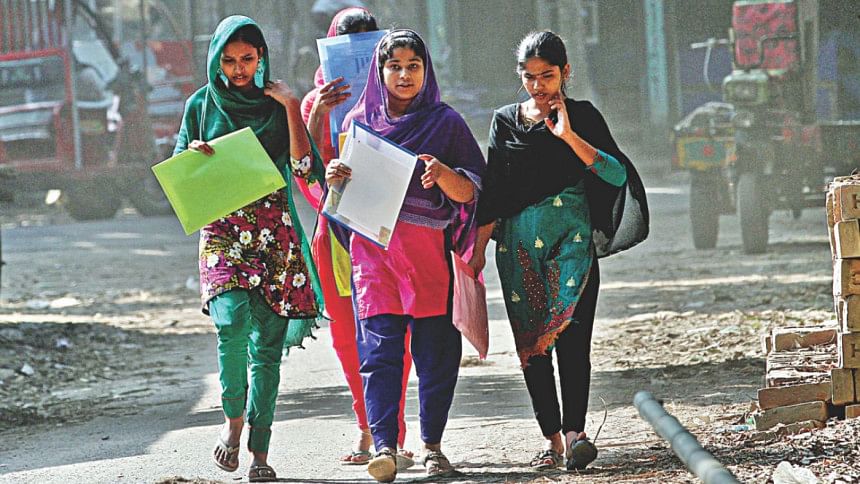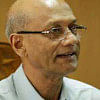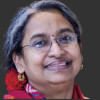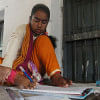42pc girls drop out before SSC

A whopping 42 percent of girls who take admission in grade-VI drop out before completing the secondary level, according to a draft report prepared by the government.
Girl's dropout rate is higher than that of boys, whose 33.43 percent discontinued school last year, says the report.
However, the overall dropout at secondary level has gradually been declining since 2008 when the rate was a staggering 61.38 percent. The rate came down to 37.81 percent last year from 38.3 percent the previous year.
The Bangladesh Bureau of Educational Information and Statistics (Banbeis) prepared the draft report styled "Bangladesh Education Statistics-2017" and organised a dissemination workshop for its stakeholders at its office yesterday.
"Poverty is a major reason behind the dropout of girls. Just 10 years ago, we used to see little girls being compelled to work as domestic helps to survive. But the situation has changed," said Education Minister Nurul Islam Nahid while speaking at the programme.
He added guardians are now very conscious and the government has also been providing necessary support.
"Free textbooks and stipend programmes from primary to higher education -- this is how we are extending our support. Around 2.3 crore students now get the stipends," the minister added.
Md Fashiullah, director of Banbeis, held both early marriage and poverty accountable for girl's dropout.
The draft report says dropout rate at higher secondary level (Class 11-12) was 19.89 percent last year.
The Banbeis collected data online from all 41,461 post-primary education institutions across the country from September 20 to October 20 last year to prepare the report.
The total number of students at these institutions is around 1.87 crore, says the report, adding, the number of institutions from primary to university is 1.74 lakh.
However, the report does not have any information on the Qawmi madrasas. The Banbeis director said there are around 15 lakh students at the Qawmi madrasas.
INCREASING TEACHER-STUDENT RATIO
The report also portrays a grim picture of the teacher-student ratio.
There was one teacher for 42 students in secondary schools last year. The country still remains far from achieving the minimum international standard teacher-student ratio at this level.
The international standard teacher-student ratio is 1:30. Moreover, the National Education Policy, 2010 targets to achieve this ratio at secondary level by this year.
According to the report, teacher-student ratio was 1:42 in 2016 1:41 in 2015, 1:39 in 2014, 1:37 in 2013 and 1:36 in 2012.
Education ministry officials said the teacher-student ratio is an indicator of quality of education. The quality falls in crowded classrooms where it is difficult for students to take lessons and teachers also get to spend less time on individual students, they said.
The number of students in the schools is increasing every year and the authorities are struggling to provide them with required number of teachers, they added.
The draft report shows that 71.66 percent secondary schools have trained teachers and 86.65 percent schools have computer facilities. It also says around 80 percent schools have internet connections.
The report also shows that the number of teachers at post-primary level in Bangladesh is 561,962 with more than 22 percent of them being female.
Around 45 percent or 18,638 education institutions are prone to disasters like flood, cyclone, landslide, river erosion and surge, the report adds.

 For all latest news, follow The Daily Star's Google News channel.
For all latest news, follow The Daily Star's Google News channel. 







Comments